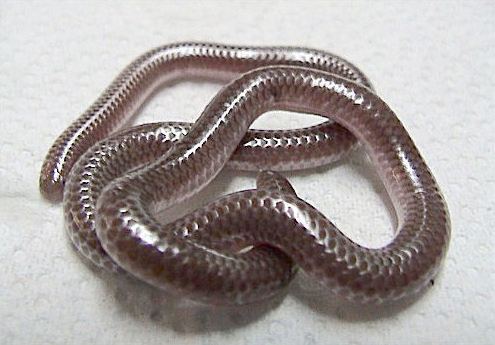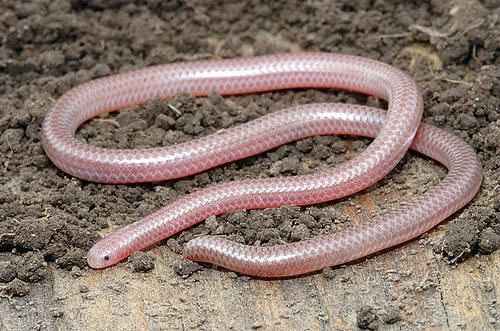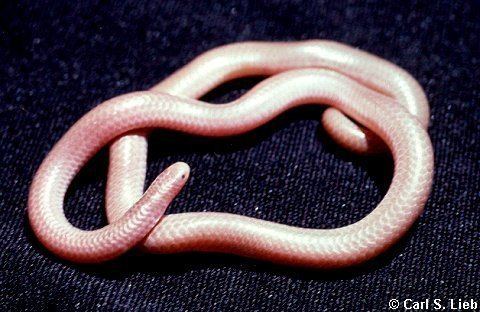Kingdom Animalia Suborder Serpentes Genus Leptotyphlops Phylum Chordata Rank Species | Subphylum Vertebrata Family Leptotyphlopidae Scientific name Leptotyphlops dulcis Higher classification Leptotyphlops Order Scaled reptiles | |
 | ||
Similar Snake, Leptotyphlops, Scolecophidia, Leptotyphlopidae, Reptile | ||
Blind snake leptotyphlops dulcis sanderson tx
Leptotyphlops dulcis is a blind snake species endemic to the southwestern United States and northern Mexico. Three subspecies are currently recognized, including the nominate subspecies described here.
Contents
- Blind snake leptotyphlops dulcis sanderson tx
- Description
- Behavior
- Diet
- Common names
- Geographic range
- Conservation
- References

Description

Texas blind snakes appear much like a shiny earthworms. They are pinkish-brown (puce) in color with a deep sheen to their scales. They appear not to be segmented. Their eyes are no more than two dark dots under the head's scales. Their mouths are small and set in an underbite.
Adults can grow to approximately 27 cm (11 in) in total length, including the tail.

On the top of the head, between the ocular scales, L. dulcis has three scales (L. humilis has one scale).
Behavior

Texas blind snakes spend the vast majority of their time buried in loose soil, only emerging to feed or when it rains and their habitat floods with water. Blind snakes are often found after spring rains and mistaken for earthworms. If handled they usually squirm around and try to poke the tip of their tail into the handler. This is a completely harmless maneuver and likely serves as a distractive measure. Their mouths are far too small to effectively bite a human being.
It has been observed that blind snakes have been carried by Eastern Screech Owls back to their nests, where they help to clean it of parasites.
Diet
The diet of L. dulcis consists primarily of termite and ant larvae.
Common names
Common names for L. dulcis include the following: burrowing snake, eastern worm snake, plains blind snake, Texas blind snake, Texas Rena, Texas slender blind snake, Texas threadsnake, Texas worm snake, worm snake.
Geographic range
L. dulcis is found in the southwestern United States and northern Mexico. In the USA it occurs in southwestern Kansas, western Oklahoma including the panhandle, central & south Texas west through southern New Mexico to southeastern Arizona. In northern Mexico it has been reported in Chihuahua, Coahuila, Tamaulipas, Nuevo León, San Luis Potosí, Veracruz, Querétaro, Hidalgo and Puebla. The type locality given is "Between San Pedro and Camanche Springs Tex." (Comanche Springs, Texas).
Conservation
Gauging wild blind snake populations is virtually impossible due to their secretive nature. However, like many other native Texas species, L. dulcis is known to be detrimentally affected by the red imported fire ant.
